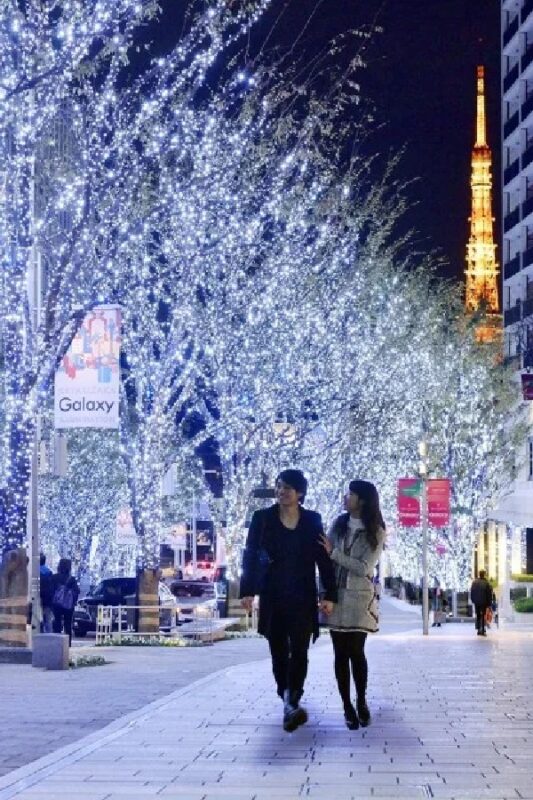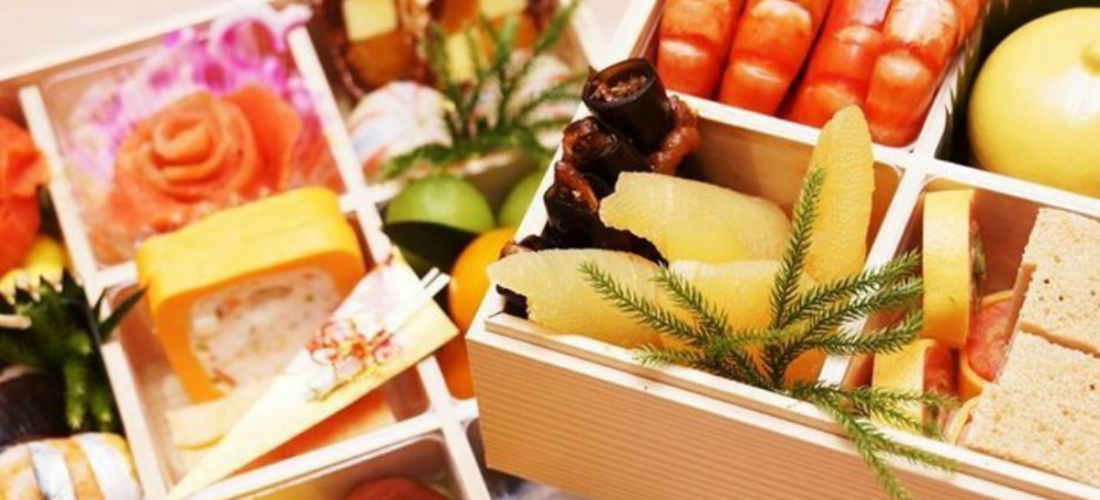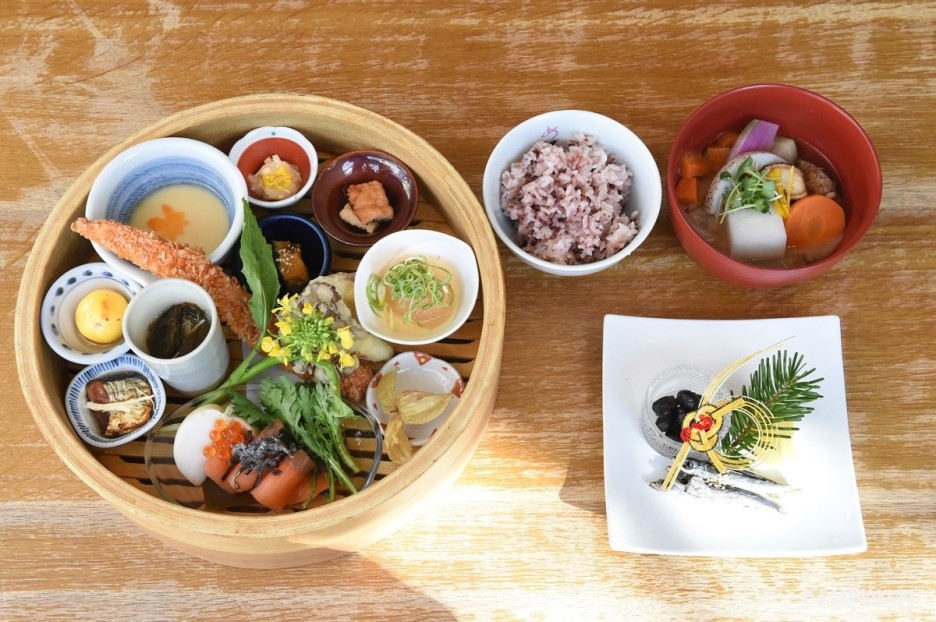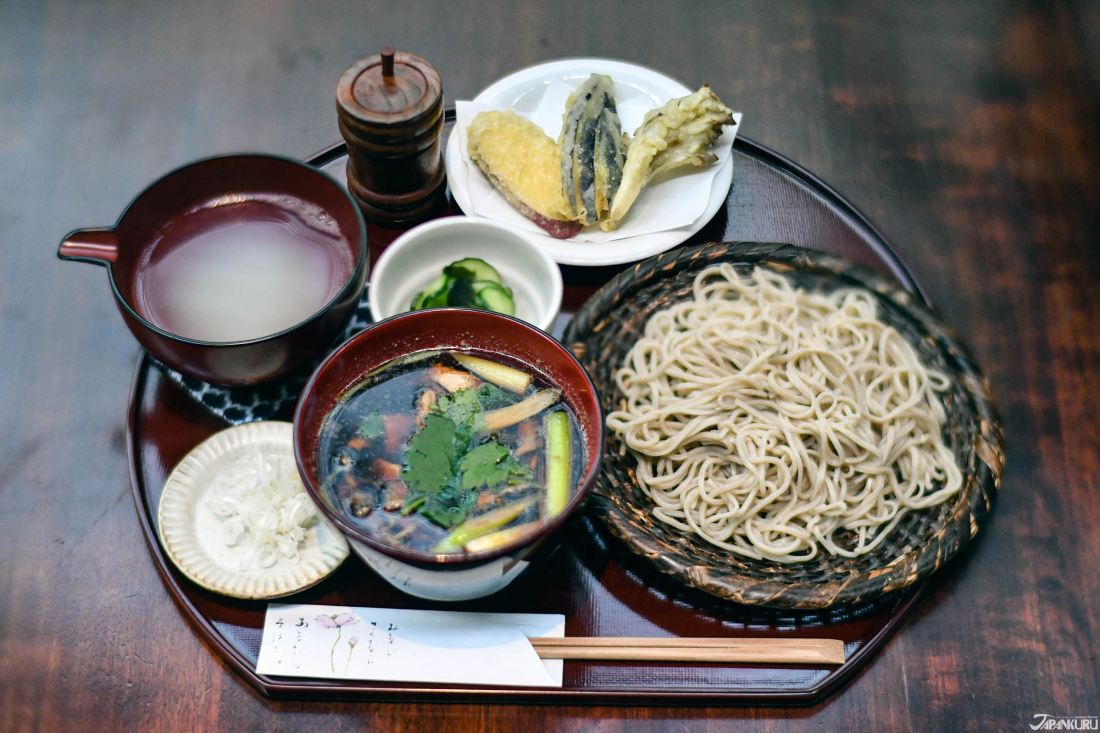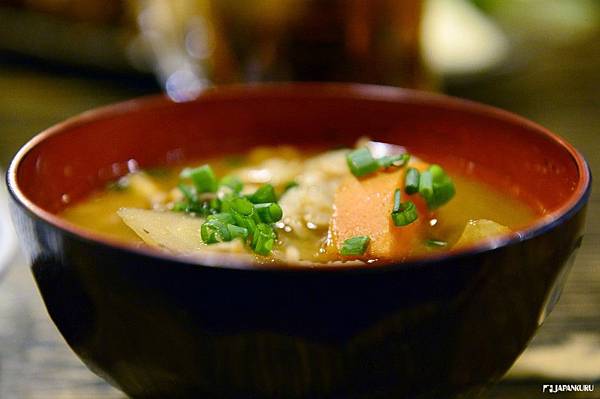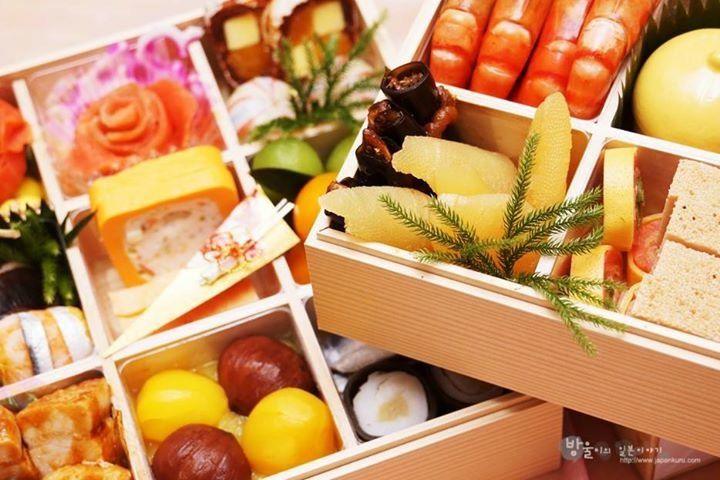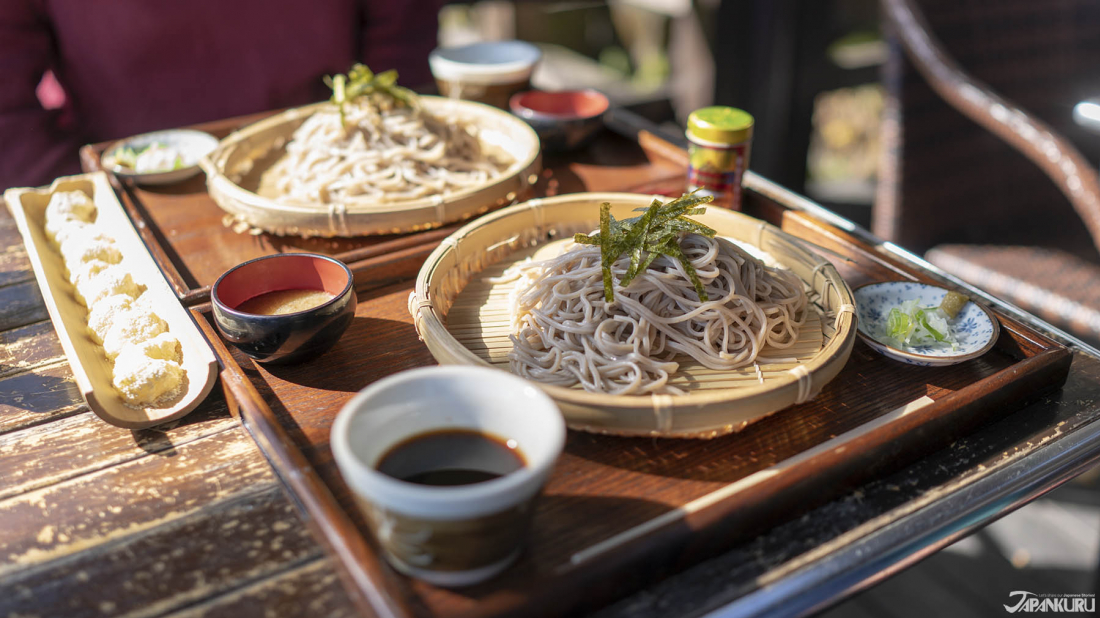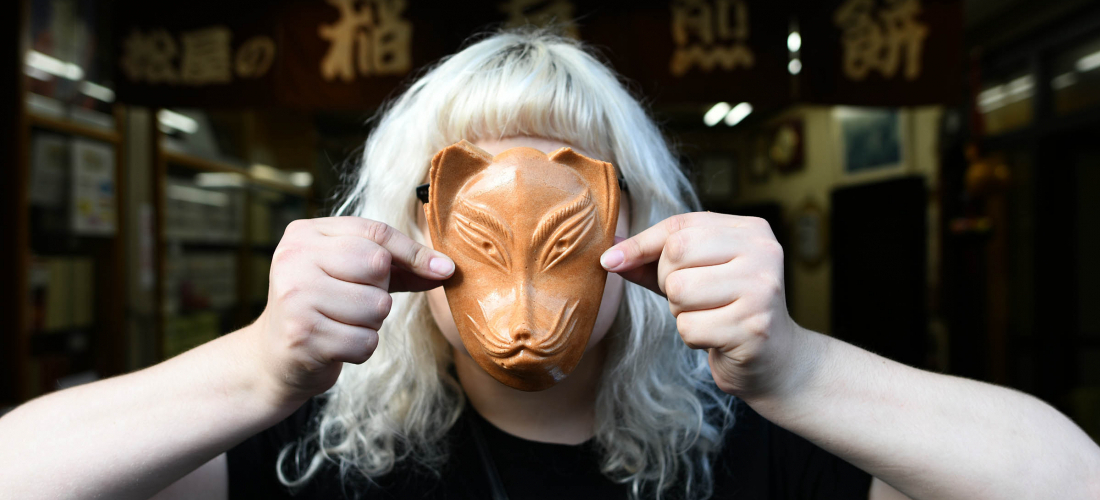CONTENTS
From simple soba noodles to bento boxes full of luck, the Japanese New Year is a holiday of food and family!
Celebrating the New Year in Japan
Around the world, short days and cold weather provide the perfect background for celebrations and get-togethers, and for the people of Japan, celebrating the new year is one of the most important events of the year. It's a time to go home, and a time for families to gather together, which inevitably means that it's also a time for special traditions to blossom – especially when it comes to food. From the last meal of soba on New Year's Eve to the first bites of "osechi ryori" in the new year, Japanese New Year's food traditions are full of symbolism and meaning, and you might just want to try them for yourself!
Soba to Finish Out the Year
The history of soba noodles goes back to Japan's Edo period (1603-1868), an era of samurai and a mostly closed Japan, when soba (蕎麦, literally buckwheat) became popular for its flavor and nutritional value. Since those days, soba noodles have not only become a staple in everyday Japanese cuisine*, but they've become the standard meal for the last day of the year, when the dish is called "toshikoshi soba" (年越しそば, "year-crossing" soba). The important symbolism of this last meal of the year comes from the way that soba is prepared, because soba noodles are sliced instead of being stretch, and the dough's low elasticity means that each noodle is cut away in a satisfying slice – what you might call a clean break. Cutting each soba noodle represents cutting away the ties that hold you to the previous year and any bad still clinging to you, so you can start the year fresh and unburdened!
*Especially in the north where buckwheat is a major crop and the tiny white soba flowers become a tourist attraction as well.
Ozoni for a Samurai Start
These days, ozoni (お雑煮) is a soup that comes with savory mochi and add-ins of all kinds, eaten on the first day of the year by just about everyone, but it started out as samurai food for warriors on the battlefield. These fighters would throw whatever they had together and boil it up for a bite to eat while out battling with rival clans, leading to the dish's name (literally "mixed boil") and the lack of one specific recipe. Ozoni varies wildly from region to region in Japan, and while chewy mochi and winter vegetables tend to be standard, Tokyoites add chicken to the ingredient list before tossing it in a simple dashi broth, while the people of Kyoto tend to skip the chicken and instead add a good dollop of white miso to make it a rich soup. The dish went from samurai fare to New Year's specialty towards the end of Japan's Muromachi period (1336–1573), when New Year's ceremonies included offering ozoni to the gods, but these days it's just eaten by everyday people, and is often tacked onto meals of osechi ryori.
Osechi to Bless the Year to Come
Osechi ryori isn't just one dish – it's a whole New Year's food tradition, where a whole variety of old-fashioned Japanese recipes are each arranged in special glossy lacquer bento boxes called jubako (重箱) before being eaten on the first day of the year (or maybe longer, depending on how much there is) – each dish valued for its special meaning. Osechi ryori can be made at home or ordered in advance, and some families like to add modern touches to their osechi ryori selections, but there are a number of symbolic items that have become standard through the centuries. Japanese black beans (黒豆), for example, are hearty beans cooked in a sweet syrup, and they represent health and productivity for the coming year. For a good harvest, sardines (田作り, tatsukuri) have traditionally been a part of the meal, since they were once commonly used as fertilizer on Japanese farms. Herring roe (数の子, kazunoko), on the other hand, is served in solid clumps of countless fish eggs, as a symbol of the many children and descendants who will someday follow in your footsteps. One last example – shopping lovers will absolutely not want to miss the kurikinton (栗きんとん), which are little sweets made of chestnuts and yellow sweet potato, said to bring financial prosperity thanks to the golden color.
There's evidence of people in Japan enjoying osechi ryori as far back as the Heian period (794-1185), when it was food for gods and royalty, so it's no surprise that the stacks of jubako are often filled with more than a dozen different dishes. These opulent bento boxes are the perfect way to enjoy Japanese culture on one of the most important days of the Japanese calendar!
Have a Japanese New Year in Your Own Home!
Some of the ingredients that go into Japan's New Year's foods aren't always easy to find all over the world, but you might be surprised at how many of the recipes you can replicate at home, so why not get your kitchen ready to try out these fun Japanese traditions yourself! (The Japanese recipe site Cookpad is a great place to find some easy osechi recipes.) Start with a few ingredients straight from Japan – things like high-quality cedar-barrel soy sauce, three-year aged miso, dashi specifically recommended for ozoni, and even soba noodles with their own soup base and dipping sauce. Then get cooking, and when you're ready to plate, you can serve up your toshikoshi soba in elegant Japanese bowls, and arrange all your lucky osechi ryori dishes in a real jubako bento box, like this traditional wooden one, this sleek ceramic one, or this very modern graffitied one. (Or just use a handful of gorgeous little Japanese plates and bowls instead!) With all that preparation, you're sure to have a lucky year ahead!
Looking for the latest trends and products coming out of Japan? We've got you covered!
COMMENT
FEATURED MEDIA
VIEW MORE 
A New Tokyo Animal Destination: Relax & Learn About the World’s Animals in Japan
#pr #japankuru #anitouch #anitouchtokyodome #capybara #capybaracafe #animalcafe #tokyotrip #japantrip #카피바라 #애니터치 #아이와가볼만한곳 #도쿄여행 #가족여행 #東京旅遊 #東京親子景點 #日本動物互動體驗 #水豚泡澡 #東京巨蛋城 #เที่ยวญี่ปุ่น2025 #ที่เที่ยวครอบครัว #สวนสัตว์ในร่ม #TokyoDomeCity #anitouchtokyodome

Shohei Ohtani Collab Developed Products & Other Japanese Drugstore Recommendations From Kowa
#pr #japankuru
#kowa #syncronkowa #japanshopping #preworkout #postworkout #tokyoshopping #japantrip #일본쇼핑 #일본이온음료 #오타니 #오타니쇼헤이 #코와 #興和 #日本必買 #日本旅遊 #運動補充能量 #運動飲品 #ช้อปปิ้งญี่ปุ่น #เครื่องดื่มออกกำลังกาย #นักกีฬา #ผลิตภัณฑ์ญี่ปุ่น #อาหารเสริมญี่ปุ่น

도쿄 근교 당일치기 여행 추천! 작은 에도라 불리는 ‘가와고에’
세이부 ‘가와고에 패스(디지털)’ 하나면 편리하게 이동 + 가성비까지 완벽하게! 필름카메라 감성 가득한 레트로 거리 길거리 먹방부터 귀여움 끝판왕 핫플&포토 스폿까지 총집합!
Looking for day trips from Tokyo? Try Kawagoe, AKA Little Edo!
Use the SEIBU KAWAGOE PASS (Digital) for easy, affordable transportation!
Check out the historic streets of Kawagoe for some great street food and plenty of picturesque retro photo ops.
#pr #japankuru #도쿄근교여행 #가와고에 #가와고에패스 #세이부패스 #기모노체험 #가와고에여행 #도쿄여행코스 #도쿄근교당일치기 #세이부가와고에패스
#tokyotrip #kawagoe #tokyodaytrip #seibukawagoepass #kimono #japantrip

Hirakata Park, Osaka: Enjoy the Classic Japanese Theme Park Experience!
#pr #japankuru #hirakatapark #amusementpark #japantrip #osakatrip #familytrip #rollercoaster #retrôvibes #枚方公園 #大阪旅遊 #關西私房景點 #日本親子旅行 #日本遊樂園 #木造雲霄飛車 #히라카타파크 #สวนสนุกฮิราคาตะพาร์ค

🍵Love Matcha? Upgrade Your Matcha Experience With Tsujiri!
・160년 전통 일본 말차 브랜드 츠지리에서 말차 덕후들이 픽한 인기템만 골라봤어요
・抹茶控的天堂!甜點、餅乾、飲品一次滿足,連伴手禮都幫你列好清單了
・ส่องมัทฉะสุดฮิต พร้อมพาเที่ยวร้านดังในอุจิ เกียวโต
#pr #japankuru #matcha #matchalover #uji #kyoto #japantrip #ujimatcha #matchalatte #matchasweets #tsujiri #말차 #말차덕후 #츠지리 #교토여행 #말차라떼 #辻利抹茶 #抹茶控 #日本抹茶 #宇治 #宇治抹茶 #日本伴手禮 #抹茶拿鐵 #抹茶甜點 #มัทฉะ #ของฝากญี่ปุ่น #ชาเขียวญี่ปุ่น #ซึจิริ #เกียวโต

・What Is Nenaito? And How Does This Sleep Care Supplement Work?
・你的睡眠保健品——認識「睡眠茶氨酸錠」
・수면 케어 서플리먼트 ‘네나이토’란?
・ผลิตภัณฑ์เสริมอาหารดูแลการนอน “Nenaito(ネナイト)” คืออะไร?
#pr #japankuru #sleepcare #japanshopping #nenaito #sleepsupplement #asahi #睡眠茶氨酸錠 #睡眠保健 #朝日 #l茶胺酸 #日本藥妝 #日本必買 #일본쇼핑 #수면 #건강하자 #네나이토 #일본영양제 #อาหารเสริมญี่ปุ่น #ช้อปปิ้งญี่ปุ่น #ร้านขายยาญี่ปุ่น #ดูแลตัวเองก่อนนอน #อาซาฮิ

Japanese Drugstore Must-Buys! Essential Items from Hisamitsu® Pharmaceutical
#PR #japankuru #hisamitsu #salonpas #feitas #hisamitsupharmaceutical #japanshopping #tokyoshopping #traveltips #japanhaul #japantrip #japantravel

Whether you grew up with Dragon Ball or you just fell in love with Dragon Ball DAIMA, you'll like the newest JINS collab. Shop this limited-edition Dragon Ball accessory collection to find some of the best Dragon Ball merchandise in Japan!
>> Find out more at Japankuru.com! (link in bio)
#japankuru #dragonball #dragonballdaima #animecollab #japanshopping #jins #japaneseglasses #japantravel #animemerch #pr

This month, Japankuru teamed up with @official_korekoko to invite three influencers (originally from Thailand, China, and Taiwan) on a trip to Yokohama. Check out the article (in Chinese) on Japankuru.com for all of their travel tips and photography hints - and look forward to more cool collaborations coming soon!
【橫濱夜散策 x 教你怎麼拍出網美照 📸✨】
每次來日本玩,是不是都會先找旅日網紅的推薦清單?
這次,我們邀請擁有日本豐富旅遊經驗的🇹🇭泰國、🇨🇳中國、🇹🇼台灣網紅,帶你走進夜晚的橫濱!從玩樂路線到拍照技巧,教你怎麼拍出最美的夜景照。那些熟悉的景點,換個視角說不定會有新發現~快跟他們一起出發吧!
#japankuru #橫濱紅磚倉庫 #汽車道 #中華街 #yokohama #japankuru #橫濱紅磚倉庫 #汽車道 #中華街 #yokohama #yokohamaredbrickwarehouse #yokohamachinatown

If you’re a fan of Vivienne Westwood's Japanese designs, and you’re looking forward to shopping in Harajuku this summer, we’ve got important news for you. Vivienne Westwood RED LABEL Laforet Harajuku is now closed for renovations - but the grand reopening is scheduled for July!
>> Find out more at Japankuru.com! (link in bio)
#japankuru #viviennewestwood #harajuku #omotesando #viviennewestwoodredlabel #viviennewestwoodjapan #비비안웨스트우드 #오모테산도 #하라주쿠 #日本購物 #薇薇安魏斯伍德 #日本時尚 #原宿 #表參道 #japantrip #japanshopping #pr

Ready to see TeamLab in Kyoto!? At TeamLab Biovortex Kyoto, the collective is taking their acclaimed immersive art and bringing it to Japan's ancient capital. We can't wait to see it for ourselves this autumn!
>> Find out more at Japankuru.com! (link in bio)
#japankuru #teamlab #teamlabbiovortex #kyoto #kyototrip #japantravel #artnews
Photos courtesy of teamLab, Exhibition view of teamLab Biovortex Kyoto, 2025, Kyoto ® teamLab, courtesy Pace Gallery

Japanese Makeup Shopping • A Trip to Kamakura & Enoshima With Canmake’s Cool-Toned Summer Makeup
#pr #canmake #enoshima #enoden #에노시마 #캔메이크 #japanesemakeup #japanesecosmetics

⚔️The Robot Restaurant is gone, but the Samurai Restaurant is here to take its place. Check it out, and don't forget your coupon!
🍣신주쿠의 명소 로봇 레스토랑이 사무라이 레스토랑으로 부활! 절찬 쿠폰 발급중
💃18歲以上才能入場的歌舞秀,和你想的不一樣!拿好優惠券去看看~
#tokyo #shinjuku #samurairestaurant #robotrestaurant #tokyotrip #도쿄여행 #신주쿠 #사무라이레스토랑 #이색체험 #할인이벤트 #歌舞伎町 #東京景點 #武士餐廳 #日本表演 #日本文化體驗 #japankuru #japantrip #japantravel #japanlovers #japan_of_insta

Japanese appliance & electronics shopping with our KOJIMA x BicCamera coupon!
用JAPANKURU的KOJIMA x BicCamera優惠券買這些正好❤️
코지마 x 빅 카메라 쿠폰으로 일본 가전 제품 쇼핑하기
#pr #japankuru #japanshopping #kojima #biccamera #japaneseskincare #yaman #dji #osmopocket3 #skincaredevice #日本購物 #美容儀 #相機 #雅萌 #日本家電 #일본여행 #면세 #여행꿀팁 #일본쇼핑리스트 #쿠폰 #일본쇼핑 #일본브랜드 #할인 #코지마 #빅카메라 #japankurucoupon
MAP OF JAPAN
SEARCH BY REGION

LATEST
VIEW MOREEVENT CALENDAR
VIEW MORE